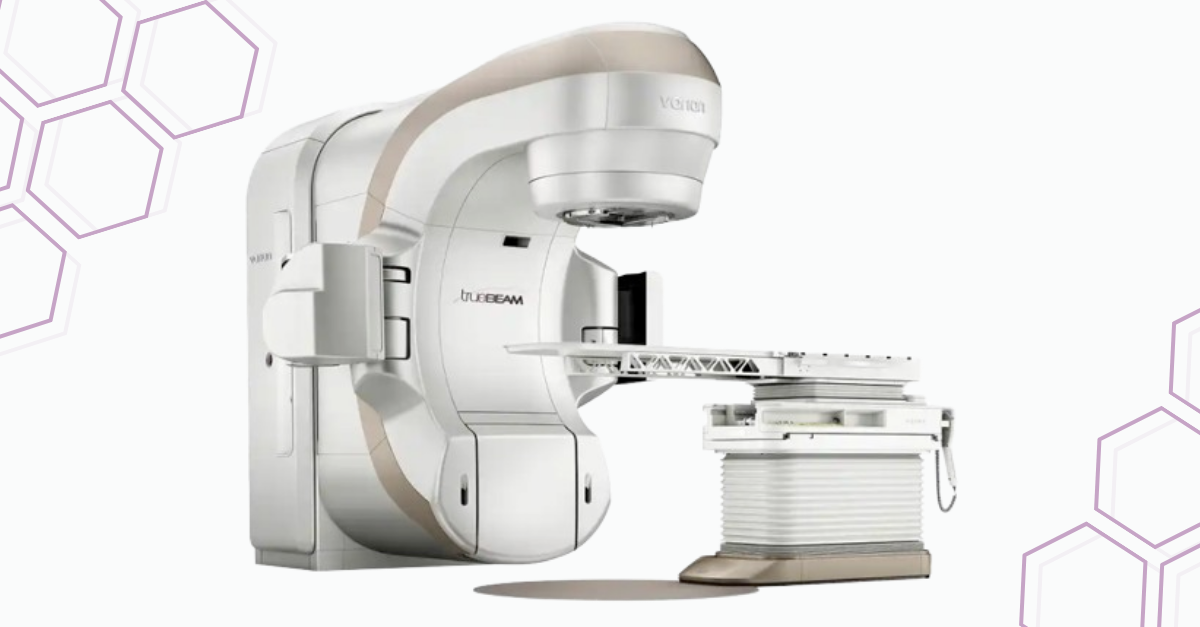
2024-07-12T16:54:51
Sunscreen Travel Tips
- Dermatology
![]() Medically reviewed by David Pratt MD.
Medically reviewed by David Pratt MD.
December 14, 2023 | Radiation Oncology

The medical linear accelerator (also known as LINAC) has become one of the most efficient radiation therapy tools for targeting and eliminating cancerous tumors. Revere Health’s Radiation Oncology team uses a TrueBeam linear accelerator to help patients accelerate their treatment process with more effective results.
A LINAC uses targeted X-rays or electron beams to destroy cancer cells while preserving the surrounding healthy tissue and thus reducing related side effects. LINACs are used to treat virtually all cancer types and have become a cornerstone of radiation therapy thanks to their precision, versatility, efficiency, and ability to deliver “tattoo-less” treatment.
Precision
One of the primary advantages of the LINAC is its ability to deliver highly precise and focused radiation beams to cancerous tissues. Unlike traditional treatment methods, the LINAC allows clinicians to tailor the radiation dose with remarkable accuracy, minimizing damage to surrounding healthy tissues. This precision is crucial for targeting tumors in challenging anatomical locations, improving the efficacy of the treatment while reducing the risk of side effects.
The LINAC provides oncologists with the flexibility to customize therapies based on individual patient needs. Intensity-Modulated Radiation Therapy (IMRT), Image-Guided Radiation Therapy (IGRT), and Stereotactic Body Radiation Therapy (SBRT) are just a few examples of the advanced techniques that can be seamlessly integrated into LINAC systems. This versatility ensures that patients receive the most appropriate and effective treatment for their specific cancer type and stage. Newer LINAC models use advanced imaging technology to accurately target tumors and adjust energy beams to the tumor’s shape and size. The LINAC also supports real-time imaging, such as cone-beam computed tomography (CBCT), enabling clinicians to visualize the tumor and surrounding structures with exceptional clarity just before each treatment session.
The LINAC gives patients the safe, high-precision treatment they need, usually in only 15-30 minutes per session. With advanced technologies like RapidArc and volumetric modulated arc therapy (VMAT), LINAC systems can optimize treatment delivery, significantly reducing the time patients spend in the treatment room and improving comfort.
Combining our LINAC with the AlignRT image guidance system can allow for mark-free treatments. Some radiation therapy treatments require radiographers to make a few permanent “tattoos” on the skin so they know where to accurately administer the treatment. The LINACs CBCT capabilities along with the AlignRT system allow us to use imaging mapping to target the cancerous growth, so marking the skin with a permanent tattoo is not required.
Revere Health Radiation Oncology develops personalized treatment plans to fast-track the process of diagnosis to treatment. Our radiology team is proud to offer the latest and most innovative technology to provide healing and a better quality of life to our cancer patients.

WRITTEN BY:
Zahra Nielsen
Zahra Nielsen currently serves as Revere Health’s Community Relations Specialist. She earned her bachelor’s degree in Behavioral Science from Utah Valley University with the intention of working with at-risk communities, but she has since found a love for community engagement, volunteerism, and outreach. Since graduating, her career has taken her to non-profit organizations across the country. From Washington D.C, New York, and Salt Lake City, she has had the opportunity to work with notable organizations such as the National Council for Adoption, Volunteers of America, and United Way. After years of working in different areas of community engagement, Zahra has found her niche in writing. She hopes to pursue this creative form of outreach as a way of inspiring community members to be mindful of their well-being and the well-being of others. In her free time, Zahra likes to practice and teach yoga. She also enjoys live theatre, listening to music, and watching endless hours of quirky movies and TV shows with her husband.


2024-07-12T16:54:51

2024-07-02T11:42:04

2024-07-01T13:49:28

2024-06-21T14:29:51
This information is not intended to replace the advice of a medical professional. You should always consult your doctor before making decisions about your health.